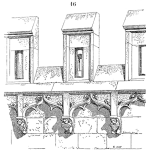
“Always remember, your focus determines your reality” – George Lucas
In this article, I will outline how to evaluate an FMEA against the FMEA Quality Objective for identifying special characteristics. Special characteristics are often not well understood by FMEA teams, and yet have potential to be highly useful in FMEA applications.
What is a special characteristic?
We’ll first define product and process characteristic, and then how they can be “special.” When you evaluate this quality objective, you need to understand the definitions very well.
The definition of “characteristic” is “a feature or quality belonging typically to a person, place, or thing and serving to identify them.” A product characteristic is “a feature, attribute or property of a part, component, or assembly.” A process characteristic is “a manufacturing or assembly process variable or parameter that has a cause and effect relationship with the variation found in a product characteristic.”
A special product characteristic is a unique product-related characteristic that can affect safety, regulatory compliance, appearance, function, performance or subsequent product manufacturing. They are the direct output of a given manufacturing operation.
A special process characteristic is a unique process-related characteristic that can affect the ability of the manufacturing process to meet special product characteristics. They are input to a given manufacturing operation.
For additional information on special product and process characteristics, refer to my articles, which cover how to use special product and process characteristics in Design and Process FMEAs, including examples.
DFMEAs can Identify Special Product Characteristics
PFMEAs can Identify Special Process Characteristics,
Why is evaluating the quality of special product and process characteristics in FMEA so important?
Special Characteristics help the project team identify the vital few characteristics that must be achieved to ensure a robust design and manufacturing process. Design FMEAs contain critical information that can identify special product characteristics. Process FMEAs contain critical information that can identify special process characteristics. It is a missed opportunity if either type of FMEA does not recommend special product or process characteristics when warranted, as the resulting product or manufacturing process may be less robust.
What makes a product characteristic “special”?
Designating a selected product characteristic as “special” is a matter of company policy. Some companies have criteria that are very rigorous, and some have more qualitative criteria. In some companies, the designation of “special” is related to the severity rating in the Design FMEA. In others, it is related to a combination of severity and occurrence ratings. When evaluating your FMEA against this quality objective, you need to know the company policy or standard for designating special product and process characteristics. There is no universal standard that defines the criteria for designating special product characteristics for all industries.
What is the quality objective for identification of special product or process characteristics in FMEA?
FMEA Quality Objective 8: The FMEA identifies appropriate special characteristics candidates, based on company policy.
How can you assess how well an FMEA meets the quality objective for identifying special product or process characteristics?
This can be done using three evaluation criteria.
Criterion 1: How well did the FMEA team know and apply company policy for special characteristics?
Criterion 2: How well did the FMEA team use FMEA information, such as cause description, to identify potential special characteristics?
Criterion 3: How well did the FMEA team recommended special characteristics to be approved according to company policy?.
What is an example of assessing how well the FMEA identifies special product or process characteristics?
As an example, I’ll use an excerpt from a fictitious bicycle hand brake subsystem (below)
Here is an example evaluation for this quality objective:
ExampleevaluationforhandbrakeSC
There were also errors in the example FMEA in the Recommended Actions column. Based on the risk level, there were missing actions. Reference my article Quality Objective 7: HIGH-RISK FAILURES IDENTIFIED
Tip
Not every FMEA Cause requires a special characteristic. When company policy requires a special characteristic, the FMEA team should carefully describe it in the appropriate column. This entry is a candidate special characteristic, and needs to be confirmed, according to company policy.
Note, if you are evaluating a Process FMEA for Quality Objective # 8, you should also review the corresponding Process Control Chart, and be sure is contains both the special product and process characteristics.
Summary
Special product and process characteristics are powerful tools to help the project team focus on the vital few characteristics that achieve robust products and processes. FMEAs are important contributors to identifying the most important characteristics.
 Ask a question or send along a comment.
Please login to view and use the contact form.
Ask a question or send along a comment.
Please login to view and use the contact form.
Leave a Reply